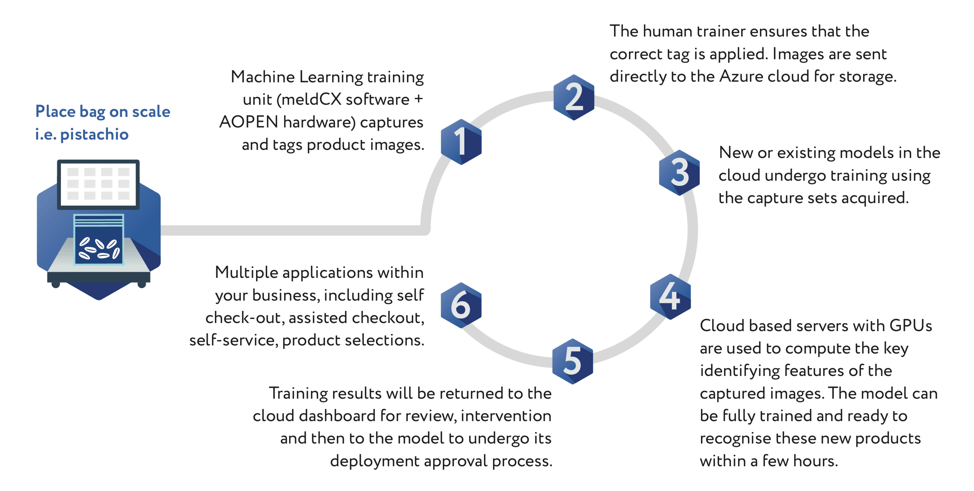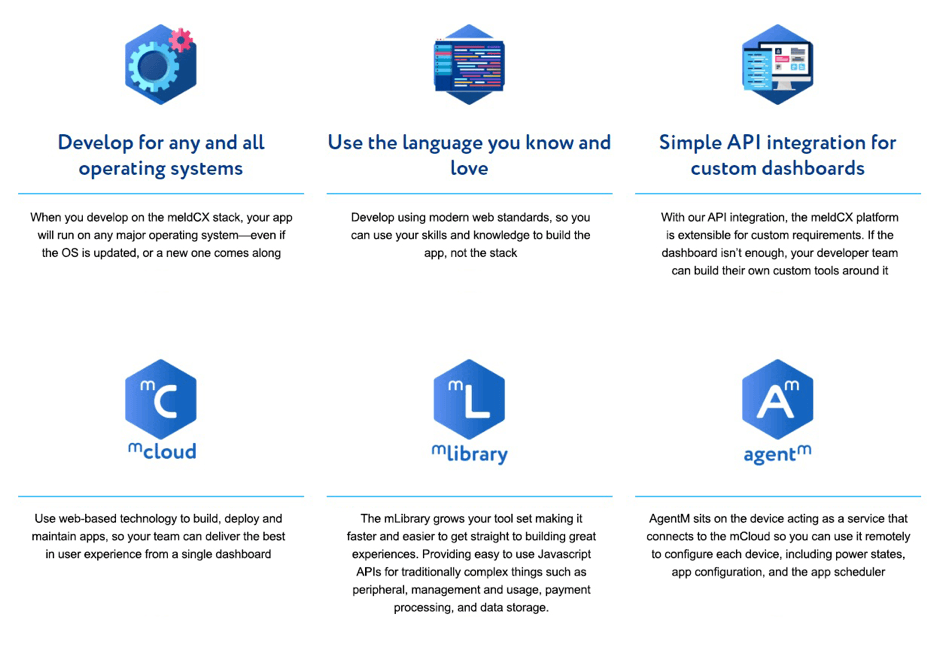How Javascript APIs Power Retail AI
Deployment of computer vision, machine learning, and big data analytics is changing the retail commerce landscape. In combination, these technologies are bringing real business benefits to the brick-and-mortar marketplace—lower costs of operations, less shrinkage, improved productivity, and better shopping experiences.
Retailers are finding innovative ways to keep customers returning to their stores. For example, facial recognition and other biometrics enable shoppers to make cashless purchases or apply store rewards programs. Theft can be reduced with real-time visibility into exactly what and how many items a customer is purchasing.
Developers and systems integrators are using state-of-the-art platforms to deliver these applications—without the vast amount of programming and resources that first-generation vision, AI, and machine learning solutions required.
Tools of the Trade
Machine learning tools are ideal for retailer applications. After all, the activities centered around buying and selling are fairly consistent. This means that developers and systems integrators can choose a flexible machine learning solution that contains a library of Javascript APIs. This enables solutions that offer a wide range of actions, rather than ones that constantly demand customization.
Drawing from such an extensive library helps developers rapidly build a fully functioning solution that recognizes products and applies business rules at the edge, while performing deep analytics in the cloud.
This accelerates the machine learning process. Developers can use the solution’s functionality without writing a single line of code, and customize only what’s necessary to meet a retailer’s specific needs.
Other developments have also simplified and enhanced the machine learning process in ways that benefit retailers and other sectors.
For example, Intel® Movidius™ is optimized for power consumption compared with GPUs. And the OpenVINO™ toolkit (formerly the Intel® Computer Vision SDK) enables the development of applications and solutions that emulate human vision with up to a 19.9x increase in deep learning performance.
One Real-World Example
Companies seeking to take advantage of simplified IoT processes might consider how AOPEN, a device manufacturer and meldCX, a developer of web-based API tools, co-developed a retail solution.
The meldCX software uses meld-intelligence (m-intelligence), an AI system that enables machine learning by way of computer vision and data analysis. It recognizes retail products, learns behaviors, and applies business rules at the edge and in Microsoft’s Azure Cloud. In the cloud, m-intelligence trains the solution to recognize products and to apply business rules. Once the machine learning takes place, the rules are pushed down to the devices at the edge.
AOPEN provides an open platform with ruggedized, purpose-built hardware designed for use in retail. Because it’s effortless to deploy, a systems integrator can install the system in a matter of hours versus days.
The AOPEN-meldCX solution was initially developed for Prolife Foods, the company behind several leading brands sold in Australia and New Zealand. The meldCX product recognition technology empowers retailers to build and teach their own machine learning training models.
“By applying advanced computer vision algorithms to a camera attached to a scale, the system can see and understand what is going on at the point of transaction and track every item,” said Ian Jackson, general manager of Prolife Foods. “We can apply this machine learning model across our business and integrate with our supply chain to optimize how we utilize end-to-end information.”
System Overview
The meldCX toolset and AOPEN hardware solution make it very straightforward for an integrator to get the system up and running. After the solution is installed, even a store employee with basic technical skills can be trained to run the machine learning process.
“We’ve simplified machine learning over the course of developing the solution. Initially, about 4,000 images per product were needed to train the system. We've now got that down, in most cases, to under 300,” remarked MeldCX co-founder and CEO Stephen Borg.
Let’s take a look at how the AOPEN and meldCX platform work. We’ll use the example of how the purchase of a bag of pistachio nuts flows—as shown in Figure 1. The meldCX software and AOPEN hardware are deployed at the checkout counter—alongside standard PoS equipment such as a bar code scanner.
- Once the bag of nuts is scanned and the image captured and tagged, the system recognizes that the bag is filled with pistachios.
- Store staff, such as a checkout clerk, ensures that the correct tag is applied, and its image is automatically sent to the Azure cloud for storage.
- New or existing models in the cloud undergo training, using the captured sets acquired.
- Cloud-based servers are used to identify the key identifying features of captured images. The model can be fully trained and ready to recognize new products in just a few hours.
- The training results are returned to the cloud dashboard for review and intervention—and then to the model to undergo a deployment approval process.
- Finally, multiple business applications, including self-checkout, assisted checkout, self-service, and product selections can be applied via meldCX APIs.

A Deeper Look into Solution Components
The meldCX and AOPEN solution provide developers with a single pane of glass for control and application creation. The solution’s library of Javascript APIs simplifies machine learning to accomplish traditionally complex tasks such as peripheral management, usage, payment processing, and data storage.
While the solution can be used without additional coding, its simple API integration and m-intelligence enables the building of new models that can be used by devices at the edge. The meldCX tool set and API libraries enable developers to further refine the application. But there’s no need to develop an extraction layout, drivers, or any aspect around the machine learning component.
The solution is fast and accurate, making transactions quick and easy. Integration of Intel Movidius and the OpenVINO toolkit play a big part in making it possible for the system to detect six products in just one second.
Flexible and scalable—and with no separate coding needed for different OS platforms—the meldCX and AOPEN solution is simple to deploy on diverse platforms and devices. (See Figure 2.) MeldCX’s Borg says, “In terms of security, the solution can be deployed behind Chrome, Windows, Linux, or Android encryption without any code changing.”

Going Beyond Checkout
By connecting the solution with their ERP system, retailers can optimize inventory levels from distribution to the individual store. Borg explains another thing to consider: “Retailers often sell seasonal items such as fruits and vegetables. This kind of produce, for example, is imported from different places, depending on the time of year. Without having to retrain the model, the meldCX solution can factor the product’s origin into the system so that correct pricing and labeling is automatic.”
In addition, retailers can maintain compliance in regard to merchandising agreements, so that each supplier is issued the correct number of shelves and correct placement within the aisle and store.
Parcel postage processing is another use case. The solution can be trained to recognize the size and shape of a parcel, and to use AI to verify weight, the shipper’s identity, and international shipping regulations.
Do More in Less Time with Simplified Machine Learning
Machine learning offers developers and systems integrators new ways to achieve their end client’s goals. Solutions such the AOPEN and meldCX system simplify and accelerate the machine learning process—solving many of the challenges that retailers face.